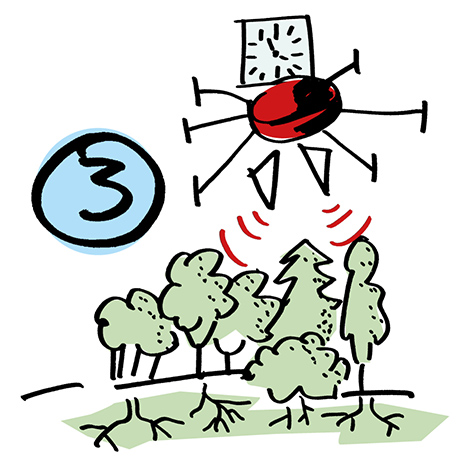Tomographic Imaging in Non-Homgeneous Media
Coming soon

Sub-Projects
Measurement and modeling of wave propagation in inhomogeneous anisotropic media, error estimation for tomography
Lead: Prof. Dr.-Ing. Christian Damm, Institute of Microwave Engineering, UUlm
The first part of this doctorate will deal with the precise metrological characterization of materials relevant for KoRaTo with regard to their electromagnetic properties. For this purpose, near-field measuring heads are used, which allow a broadband measurement, with the vector network analysis, from a few 10 MHz to 8 GHz over all frequency ranges relevant for KoRaTo. Short dipole antennas are used for vector measurements to measure vegetation layers close to the surface. This data serves as a starting point for modeling real measurement scenarios and enables the identification of propagation effects relevant to imaging quality, depending on the actual material properties. In parallel, in the second part of the doctorate, an application-related modeling of the material-dependent propagation effects takes place. These models should allow an exact calculation of the wave propagation in inhomogeneous anisotropic materials with as little computational effort as possible. For comparison, very computationally intensive full-wave electromagnetic simulations are used. For this purpose, an evaluation scheme for the quality of tomographic imaging must be developed in order to be able to assess the relevance of various propagation effects. The influence of rough material boundaries on the propagation of the waves is also investigated. In order to reduce the numerical effort and thus accelerate the calculation, the applicability of known homogenization methods – e.g. according to Clausius-Mossotti and Maxwell-Garnett – is examined and, if possible, integrated into the modelling. Numerical time and frequency domain methods are used to calculate the EM fields. With the models obtained, simulated radar data are to be generated, which are made available for other work in KoRaTo for reproducible error estimation in a uniform framework. They enable the scientific comparison of different data acquisition approaches, trajectories and system architectures because they are exact and can be repeated at will. The possibility of the targeted generation and consideration of reproducible measurement errors is also integrated into the radar simulation. The models created enable a clear improvement in tomographic imaging quality due to a more precise propagation description.
